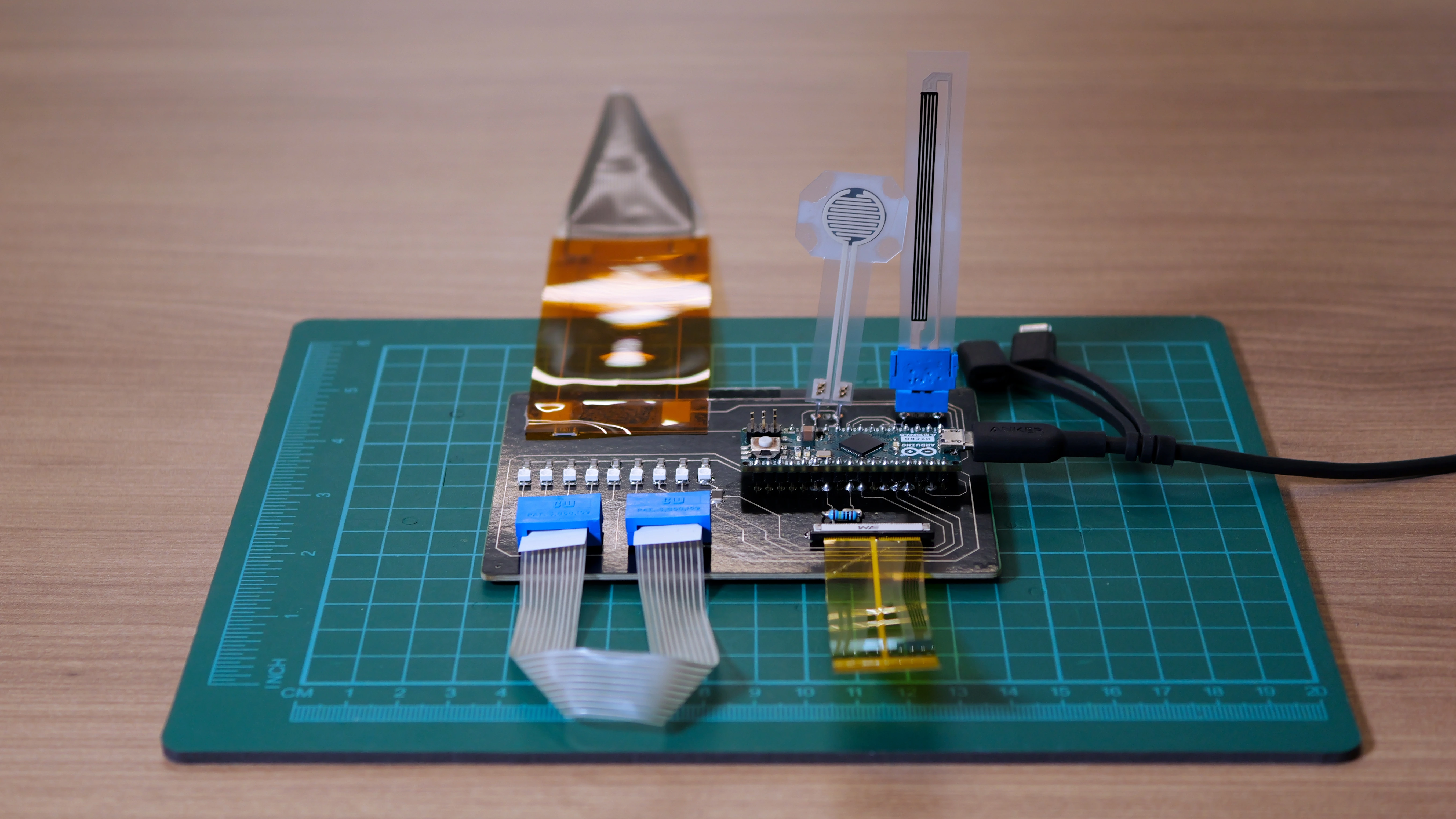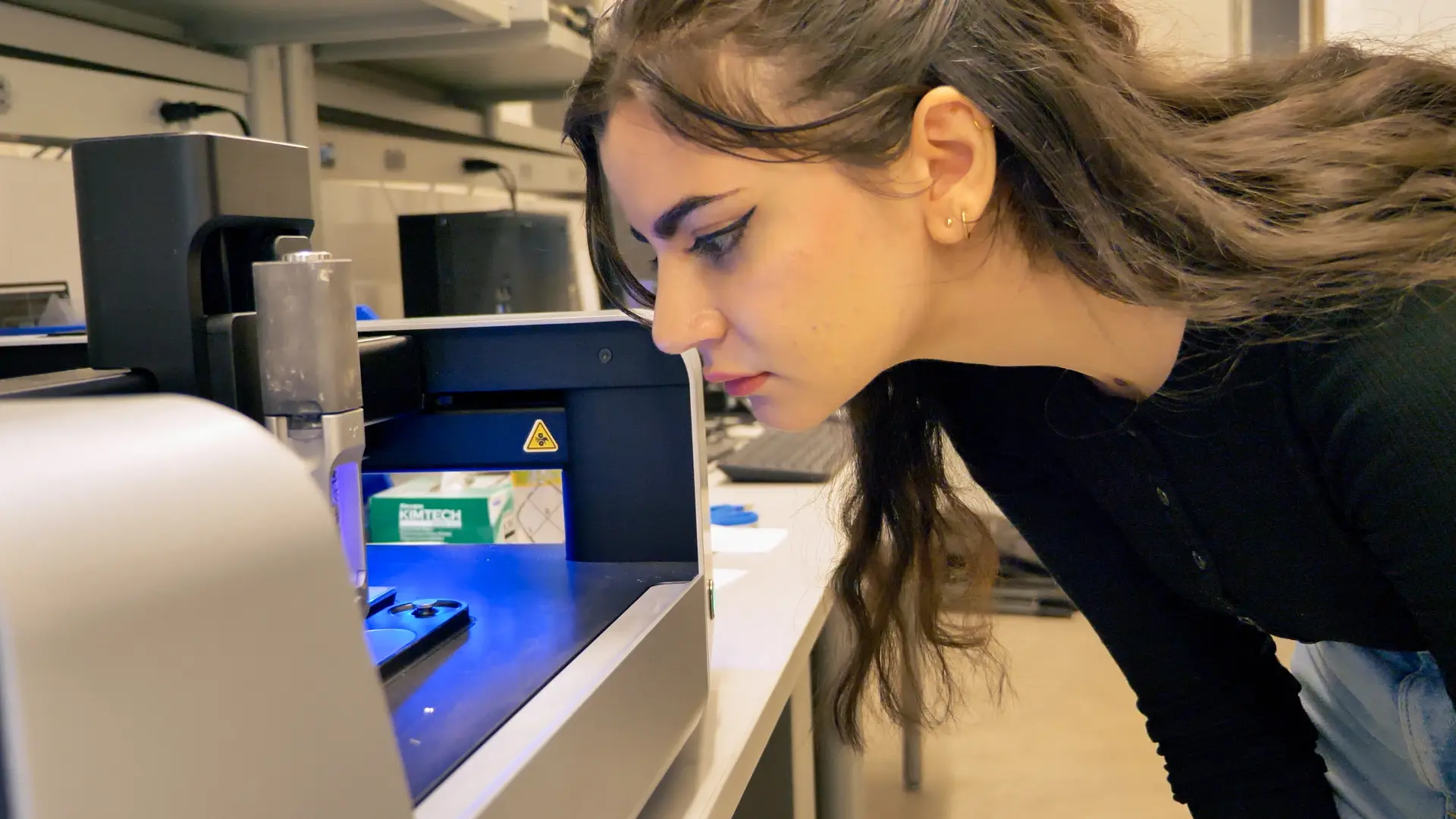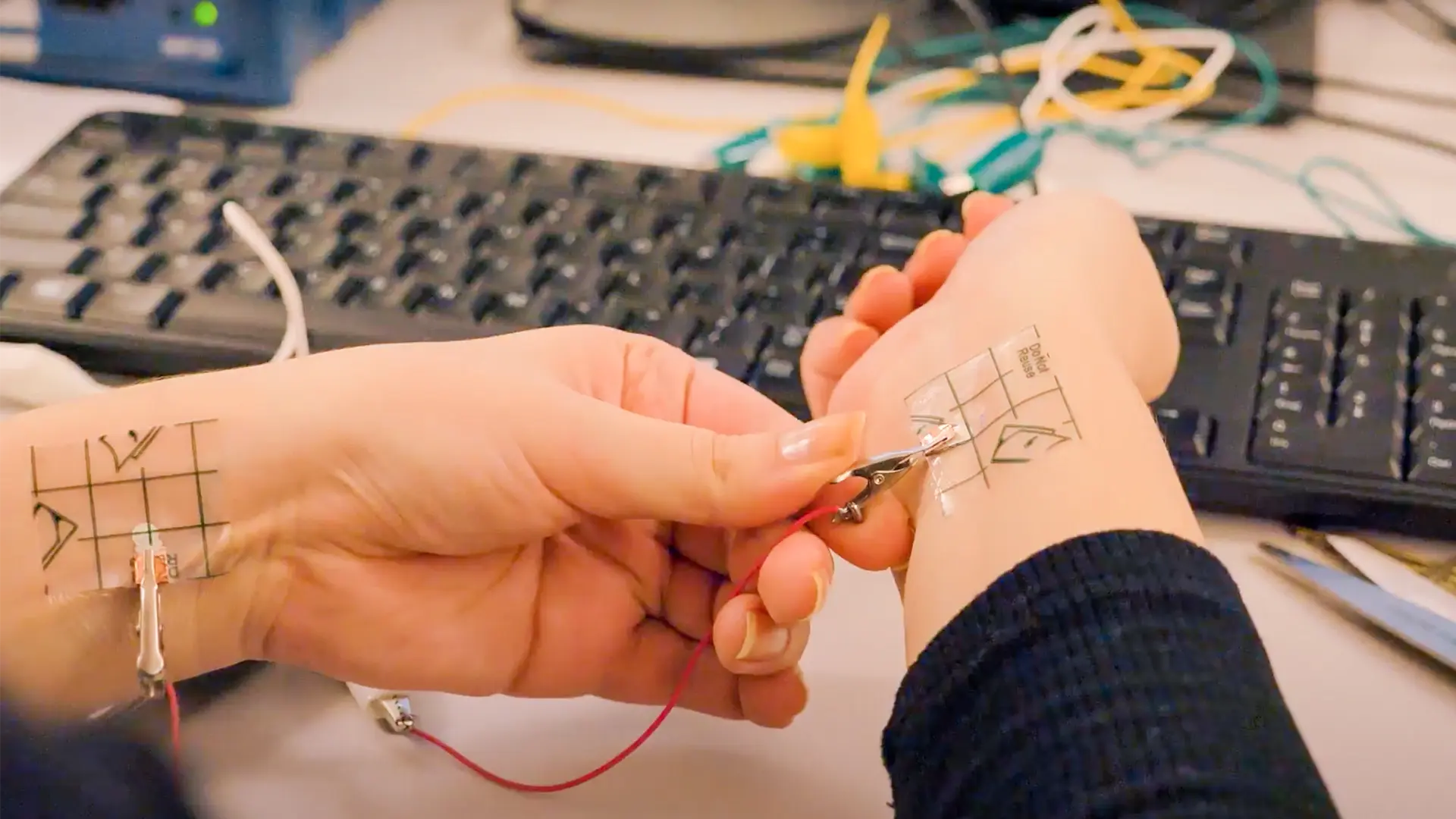Webinar Recap: How to Connect Circuits
In this webinar, Voltera’s Applications Technician, Devon Pianosi, and Panasonic’s Project Engineer, Simon Wong, explored connector technologies and design strategies for integrating reliable connections into flexible hybrid electronics (FHE). The session covered failure modes, substrate compatibility, material selection, connector classifications, and real-world integration examples using the V-One PCB printer and NOVA materials dispensing system.
Webinar highlights
Why connector strategy matters in FHE
Connector integration is often overlooked in early-stage hardware development, but for flexible and stretchable circuits, it’s one of the most common failure points. The session began with an overview of the mechanical and electrical challenges faced when connecting rigid and flexible circuit elements, especially on substrates like thermoplastic polyurethane (TPU) or polyimide (Kapton).
To reduce risks like tearing, delamination, or cracking near interconnects, it’s important to consider:
- Material compatibility between substrate, ink, and adhesives
- Placement of connectors to minimize mechanical stress
- Use of stiffeners, encapsulation, or cushioning backers to prevent fatigue
Devon shared multiple examples of connector integration, demonstrating how printed flex cables, carbon sensors, and soft stretchable traces can be reliably bonded using zero insertion force (ZIF), crimp, insulation displacement contact (IDC), or anisotropic conductive adhesives.


Types of connectors and use cases
Simon provided a deep dive into industry-standard connector types, including:
- Card edge connectors for power boards and swappable modules
- Flat cable and flexible flat cable (FFC) connectors for compact board-to-board links
- Two-piece stacking connectors with narrow pitch for vertical orientation
- ZIF connectors for flexible PCBs and low-cycle mating applications
For each category, design considerations such as insertion force, retention mechanism, soldering method, and pitch size were addressed. Panasonic’s “Tough Contact” series was highlighted for applications requiring high reliability, corrosion resistance, or miniature footprints.
Live Q&A
Q: Do crimp connectors work on stretchable circuits?
A: Yes, with added stiffeners or adhesives to prevent fatigue at the contact point.
Q: What's the minimum supported pitch for ink traces and connector integration?
A: NOVA supports trace widths down to 100 µm, with 0.35-0.5 mm pitch connectors being feasible using fine particle inks.
Q: Can I glue connectors onto flex boards using Voltera printers?
A: You can with NOVA. NOVA dispenses adhesives precisely for automation and connector bonding.
Q: Are there high-voltage connector options?
A: Panasonic’s CF series offers surface-mountable high-voltage connectors (about 1100-1400 V dielectric strength).
Q: What are some common beginner mistakes in connector design?
A: Common mistakes include not reinforcing connectors, assuming rigid PCB rules apply to flex/stretchable designs, or using low-quality components that skew results.
Q: Do you have any experience with polydimethylsiloxane (PDMS) or soft substrates?
A: We have tested stretchable polymers like TPU and Panasonic's BEYOLEX™ on NOVA, but PDMS integration is still experimental.
Special offers
Take advantage of our conductive ink sale, buy one, get one free on single cartridges, save 60% on 4-packs, or 65% on six-packs, valid until December 5, 2025.
Additional resources
Want to learn more about interfacing flexible and rigid circuits? Check out these white papers:
- Connecting Flexible and Stretchable Substrates to Printed Circuit Boards
- Printing a Flexible Membrane Keyboard with Conductive Silver Ink and Dielectric Ink on PET
- Printing Strain Gauges on TPU laminated on a Glove for Remote Hand Control
- Printing a Flexible PCB with Silver Ink on PET
Ready to talk about how Voltera can help you with your electronics projects? Book a meeting to speak with one of our technical representatives.

Check out our Customer Stories
Take a closer look at what our customers are doing in the industry.
